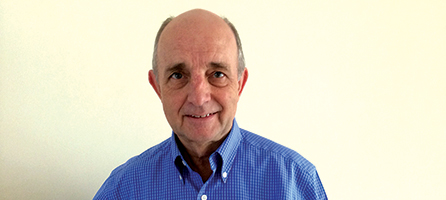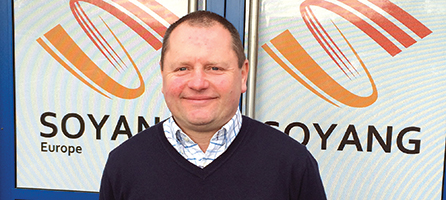
Martyn Wright, managing director, Brunel Engraving Company
For many years large companies supplying extruded aluminium to the sign-making industry have dominated the wayfinding signage sector. Sign-makers would traditionally use vinyl lettering and graphics to create wayfinding signs and coloured back-grounds would require the extrusions to be powder coated.
Brunel Engraving Company first came into the wayfinding signage market when we were asked to supply signage that could not be tampered with as there had been many instances of the vinyl being removed from the sign. We responded to this challenge by engraving the signage extrusions and then infilling them with a paint. Although this method of production was more expensive and consequently resulted in a more costly product, it became very popular as it protected the sign from being spoiled.
However, it was the introduction of digital print that really marked the major development of wayfinding signage. With customers increasingly requesting ever more complicated graphics, or logos which could not be effectively reproduced with vinyl lettering or engraving, digital print provided an effective solution. Digital print enables the printing of full colour logos, graphics and/or photographic images onto the signs and for those signs that require background colour the extrusion can be wrapped with a pre-printed vinyl.

It was the introduction of digital print that really marked the major development of wayfinding signage”
Digital print has particularly benefited the small order market which previously lost out as, without digital print, the cost of smaller signage quantities was prohibitive. This has been a major step forward in the market.
Additionally, Brunel Engraving Company is the only recognised Spandex Slatz Converter in the UK, producing a standard range of office signage and directory boards as well as bespoke orders. We supply Spandex products direct to the trade, creating a trade price-list of engraved, printed, and blank Slatz office signs and providing the option for signmakers to apply their own graphics or use our provide them with a finished, engraved product.
Signs at the right time

Philip Ball, managing director, Cobal Signs
Wayfinding is based on principles of mental mapping along with the gradual disclosure of information at the right time and place. The design of the signs and graphic language is important for a number of reasons; they must fit in with the overall design brief and the aesthetics of the building, while offering uniformity and consistency. More importantly, wayfinding should be simple and intuitive for everyone to follow.
Finding your way around many public places can be challenging at the best of times. In some cases signage can be difficult to read and confusing. An example of good signage is Europe’s largest public library. Opened in Birmingham in September 2013, it has ensured that every visitor—estimated to be around three million each year—is on the same page when it comes to navigating the 35,000sq m of floor space occupied by the library and the adjoining Birmingham Repertory Theatre. We ended up supplying over 110 different designs of sign and more than 8,000 individual signs throughout the project.
With ten floors (eight of which are open to the general public) spread over enough space to cover six football pitches, it’s easy to see why signage plays such an important role in making sure visitors and staff can orientate themselves around this vast building. One of the main challenges for Cobal Signs was to ensure that each sign met the branding guidelines set by the Library of Birmingham and that all names were correct and corresponded to each area within the library.

Too much information becomes clutter and it loses its function; too little signage will cause people to get lost”
The key to providing effective wayfinding is providing information at the right moment. Too much information becomes clutter and it loses its function; too little signage will cause people to get lost, become frustrated and potentially spoil their overall experience. Mecanoo architects designed a strategy based on decision-making spots in the building and by implementing a hierarchical sequence of signs, from high-level information to more detailed information, managed to simplify the wayfinding experience.
LED leading the way

Sam Armstrong, sales director, Applelec
Over the past few years, we’ve noticed a demand to more exciting lit signage but with customers leaning towards low-energy, long lasting signage solutions. This is where Appelec’s LED technology comes into play.
One of our biggest projects of the last year involved a coalition with Yorkshire outfit Blue Raptor Signage, when we created a pair of six metre freestanding monoliths for York’s new 339,000sq ft (31,494sq m) Vangarde Shopping Park.
The two monoliths featured internal steel frames which were externally clad to create a curved shape with LED illuminated text. Stencil cut panels were backed in 3mm opal acrylic to create text detail with opal acrylic inlays used for primary text and white vinyl for small text areas at the base of the monolith. We used Applelec’s stocked SloanLED V Series 2 LEDs to provide illumination and supplied with a five year warranty. Both monoliths featured removable tenant panels to enable easy updates should new outlets be taken or other changes occur.
Based on drawings of the monoliths supplied by the customer, Blue Raptor Signs developed the designs from concept to reality with support from Applelec. In these planning stages, full structural engineering drawings were created to cover wind load, post load, base plate sizes, and other recommendations regarding the structural safety of the two large feature signs.

Standing at six metres in height, the scale of these monoliths meant careful planning was required to ensure they were structurally sound”
Standing at six metres in height, the scale of these monoliths meant careful planning was required to ensure they were structurally sound. Applelec has recently appointed a design engineer who will now be working on similarly complex projects to provide customer support for signage where location or environmental factors can dictate the design and construction of a sign.
The entire development was also devised to target a BREEAM ‘Excellent’ rating with sustainability considered throughout the design and build of the park’s signage, where our energy efficient LEDs were chosen.
Finding new paths

Andrew Simmons, sales director, Soyang Europe
As a means of finding their way around, people have been looking to walls and ceilings for guidance for many years, but advances in media technology and creative new substrates have seen the birth of a revolutionary new wayfinding concept that uses a previously underutilised surface; the floor.
It’s natural for people who enter a new environment to instinctively look down in order to find their bearings and so it makes sense to look at how flooring can be adapted to assist people with the process of finding their way. Here at Soyang Europe we have some highly innovative products that can be used to create graphics that can be applied to the floor, whether that be an internal commercial floor, such as at an airport where assistance with wayfinding is paramount, or externally, such as on entrance roads.

It makes sense to look at how flooring can be adapted to assist people with the process of finding their way”
Our 36sq m welcome graphic received great attention in the entrance to Sign and Digital UK, which made use of the flexible PVC G-Floor product, which is printable on the underside to create highly durable and repositionable floor covering. Exhibition halls, retail outlets, and sporting venues all have a requirement to guide people
towards entrances, special offers or to signpost boundaries. Using flooring to do this is not only progressive and exciting, but makes perfect sense now the materials are available to do it effectively.
Of interest to print providers is that there are now materials available that they can use within their existing print setup that will allow them to offer floor graphics without major investment in hardware. AlumiGraphics is a great example of this; a wide-format media made from pliable aluminium foil with a white finish that can be used with solvent, eco-solvent, latex and UV inks. It moulds itself naturally to practically any surface, rough or smooth, opening up a vast array of options for producing convenient yet striking wayfinding graphics. It’s easy to use on existing kit and will immediately encourage new areas of business.
Your text here...